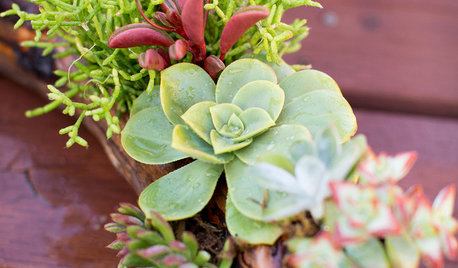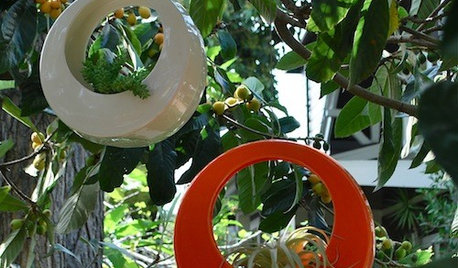Coconut husk vs pinebark
paul_t23
15 years ago
Related Stories

GREEN DECORATINGGo Cuckoo for Coconut Furniture and Surfaces
Crack open a lesser-known ecofriendly design option: tiles, flooring, tables and more made from coconut shell and palm wood
Full Story
RANCH HOMESHouzz Tour: Casual Ranch-Style Living at Its Best
A Southern California home renovation incorporates barn details, splashes of red and warm, woodsy comfort
Full Story
HOUZZ TOURSHouzz Tour: A Sleek Prefab Warms Up
Asian touches, furniture and finishes turn a showhouse into a home
Full Story
DIY PROJECTSMake a Beautiful and Long-Lasting Driftwood Centerpiece
Add succulents to found wood for an easy arrangement that looks straight from a designer florist's shelf
Full Story
FARM YOUR YARDHow to Grow Vegetables in Containers
Get glorious vegetables and fruits on your patio with a pro’s guidance — including his personal recipe for potting mix
Full Story
GARDENING AND LANDSCAPING40 Great Gifts for Gardeners
What to Get for Green-Thumb Types. It's a No-Gnome Zone.
Full Story





hotdiggetydam
paul_t23Original Author
Related Professionals
Lowell Landscape Architects & Landscape Designers · Boca Raton Landscape Contractors · Cudahy Landscape Contractors · Damascus Landscape Contractors · Duarte Landscape Contractors · Eureka Landscape Contractors · Mahwah Landscape Contractors · Ringwood Landscape Contractors · Cartersville Fence Contractors · Oxnard Fence Contractors · Surfside Fence Contractors · Wallingford Fence Contractors · Dumont Siding & Exteriors · Silver Spring Siding & Exteriors · Tooele Siding & Exteriorshotdiggetydam
ozvon
hotdiggetydam
bromaloonie
bromadams
ozvon
paul_t23Original Author
mike4284m
hotdiggetydam
lyndi_whye
ozvon